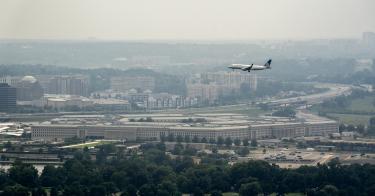The Senate Armed Services Committee has approved a version of the fiscal year 2022 National Defense Authorization Act that would increase the Pentagon’s budget by $25 billion over President Joe Biden’s request.
With this increase, the defense budget would reach $740 billion, a 5.1% bump over the $704 billion appropriated for fiscal year 2021.
The bipartisan National Defense Strategy Commission that evaluated the Pentagon’s National Defense Strategy recommended this increase. This increase, approved Wednesday by the Armed Services Committee, also aligns with The Heritage Foundation’s recommendation of growing defense spending between 3% and 5% above inflation.
Inflation was projected to be 2.2% in 2022. That number is now low given the recent inflation jumps seen in May and June of 2021 and general inflationary pressure. This means about half of the proposed increase will go to inflation.
Early signs indicate this budge increase enabled the Senate Armed Services Committee to address many of the military’s list of unfunded priorities.
Required by law, unfunded priority lists help Congress understand what each branch of the military needs but that had to be “left on the cutting room floor” due to budgetary constraints.
This move demonstrates that the Senate Armed Services Committee—in a bipartisan manner—is committed to confronting the rising threat of China and increasingly belligerent Russian behavior. In fact, the increase was approved by the massive margin of 25-to-1, with only Sen. Elizabeth Warren, D-Mass., voting against it.
However, there are still multiple obstacles before Congress enacts this increase. The National Defense Authorization Act only authorizes defense funding and policy, and the House of Representatives still must approve its version of the bill, which then must be reconciled with the Senate version.
Considering that the Senate National Defense Authorization Act was approved with the wide bipartisan margin of 23-to-3, there is hope that the House of Representatives will follow the Senate’s footsteps and work in a bipartisan fashion.
Beyond the National Defense Authorization Act, the money still needs to be appropriated before getting to the Pentagon.
In the appropriations committees, lawmakers are embroiled with the Biden administration’s enormous budget proposal that would massively increase the budget of every federal agency that does not handle the security of our nation.
Further complicating the picture, the appropriations consideration comes in addition to the multitrillion infrastructure package that is being discussed as part of budget reconciliation instructions.
Congress needs to address the Biden administration’s overall budget and& infrastructure package that has serious issues. This includes properly prioritizing national defense by reducing nondefense discretionary and mandatory spending. Lawmakers need to be cognizant of the multiple radical proposals that will derail the appropriations debate this year, including scraping the Hyde Amendment.
To avoid the damaging effects of short-term appropriations that do not allow the military to change its programs, Congress would ideally accomplish this work before the start of the new fiscal year that begins Oct. 1, 2021.
Despite the long road ahead, this initial step shows that the Senate Armed Services Committee is taking seriously its responsibilities to build the military for the current environment of great power competition.
The passage of the Senate National Defense Authorization Act is a laudable step toward properly funding national defense and seriously addressing the challenges posed by China and Russia. Now, the rest of Congress needs to build on the Senate Armed Services Committee’s good work.
This piece originally appeared in The Daily Signal



